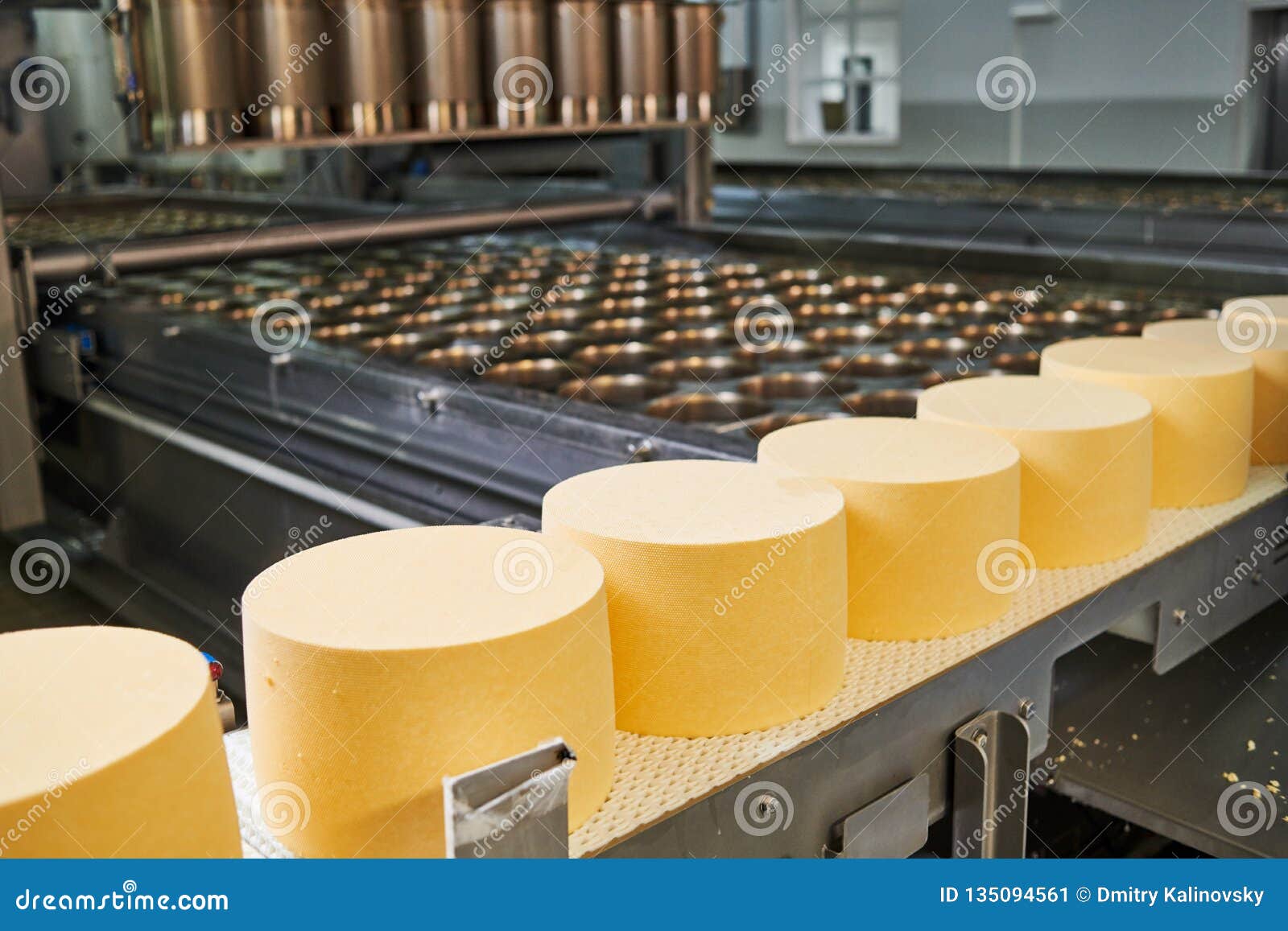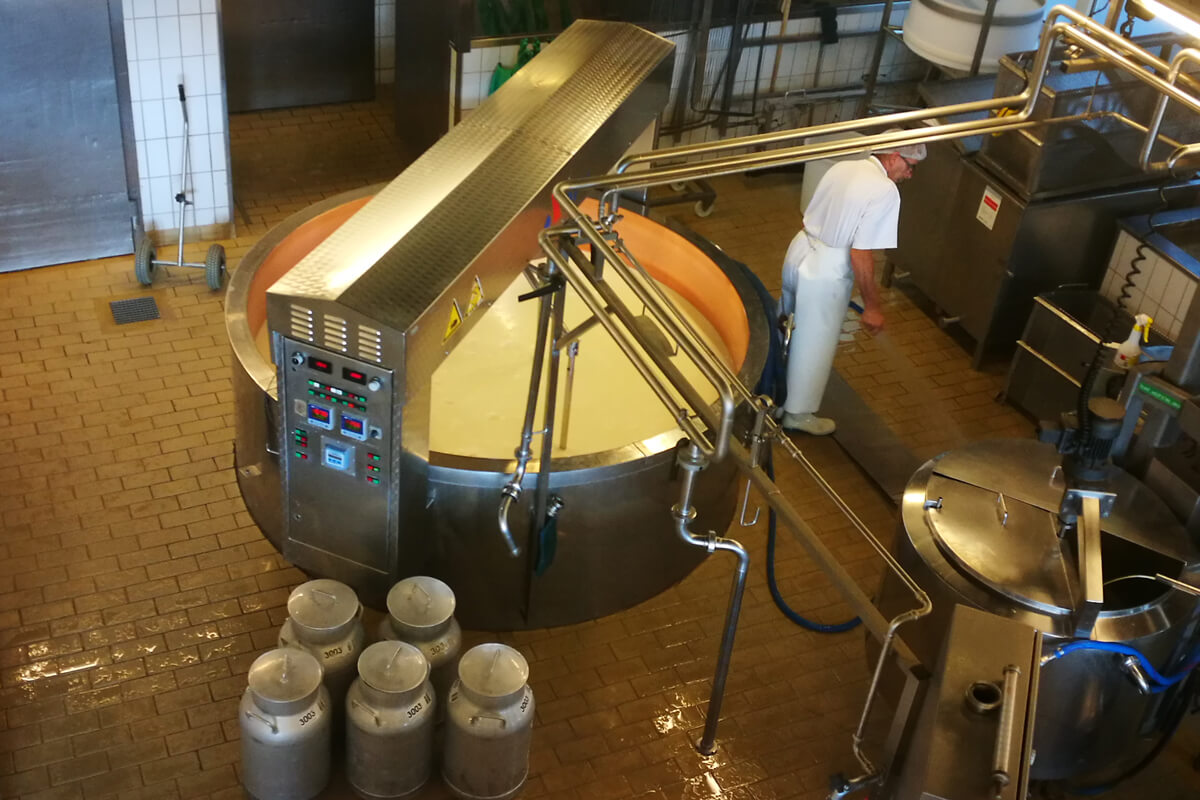A Comprehensive Guide to Cheese Manufacturing: Actions, Challenges, and Quality Assurance Actions
Cheese manufacturing is a complicated procedure that requires careful attention to detail, from the initial choice of top quality milk to the last stages of manufacturing. As we check out these aspects, it ends up being clear that the future of cheese production will certainly be formed by advancing patterns and innovations that can redefine traditional methods.

Review of Cheese Production
Cheese production is an intricate process that changes raw milk right into a varied series of dairy items, each with unique flavors and structures. The trip starts with the option of high-quality milk, which can come from numerous resources, consisting of cows, goats, and lamb. The structure of the milk-- fat material, protein levels, and the presence of certain cultures-- plays a vital function in the last product.
The process typically includes a number of phases, consisting of pasteurization, where damaging bacteria are eliminated, and the addition of starter societies and rennet, which help with milk coagulation. Once coagulated, the curds are separated from the whey, and the curds undertake various therapies, including cutting, food preparation, and pushing, which considerably influence the cheese's characteristics.
Furthermore, variables such as aging problems, moisture, and temperature level can drastically modify the flavor profile and texture of celebrity. The art of cheese manufacturing counts heavily on the cheesemaker's competence, as they should stabilize scientific research and creativity to produce premium cheese. Comprehending these foundational elements is essential for appreciating the intricate nature of cheese production and the wide range of cheeses available out there today.

Key Steps in Manufacturing
Celebrity manufacturing procedure includes several vital actions that collectively transform raw milk into a completed item. Initially, the procedure begins with milk collection and top quality assessment, making certain that the raw material meets the essential standards for cheesemaking. Following this, the milk is pasteurized to get rid of damaging bacteria, improving the security of the last product.
Following, details starter cultures are contributed to the pasteurized milk, assisting in the fermentation procedure. These cultures convert lactose right into lactic acid, which assists in curd development. Consequently, rennet is introduced to coagulate the milk, leading to the splitting up of curds and whey. The curds are then reduced and cooked, enabling them to launch more whey.
Once the preferred appearance is attained, the curds are drained and pressed right into mold and mildews, shaping the cheese. Salting is a vital step, contributing to flavor, preservation, and wetness control. Later, the cheese may undertake aging or ripening, throughout which tastes and appearances develop additionally. The completed cheese is packaged for distribution. Each of these actions is important in ensuring the quality and characteristics of celebrity produced.
Usual Obstacles Dealt With
While the cheese manufacturing procedure is meticulously made, numerous challenges can occur that impact both manufacturing performance and item quality. One prevalent obstacle is fluctuations in raw product top quality, specifically milk.
An additional considerable challenge is preserving optimal fermentation problems. Temperature level and moisture variations during aging can result in unwanted microbial growth, impacting taste profiles and cheese safety and security. Additionally, staffing issues, including a scarcity of skilled labor, can hinder procedures and lead to mistakes in production processes.
Equipment maintenance is also crucial; breakdowns cheese shop melbourne can interrupt workflows, causing manufacturing hold-ups and boosted expenses. Governing conformity presents its very own set of obstacles, as makers have to adhere to stringent food safety criteria, which can vary by area. Navigating these barriers needs a positive method, incorporating detailed training, regular devices checks, and strong vendor relationships to guarantee a consistent and high-quality cheese output.
Top Quality Control Techniques
Ensuring product consistency and security relies greatly on efficient quality assurance techniques throughout the cheese production process. These techniques include various stages, from resources choice to end product assessment.
One critical aspect is the surveillance of milk quality, which entails screening for microbial contamination, somatic cell counts, and antibiotic residues. Executing stringent provider analyses makes certain that only top quality milk is utilized, laying a solid foundation for the cheese-making process.
During manufacturing, essential review control points (CCPs) have to be determined and monitored. This consists of temperature control during pasteurization and fermentation, along with pH monitoring throughout curd formation - cheese makers melbourne. Normal sampling and evaluation of whey and curds can aid detect variances from wanted criteria early
Post-production, sensory evaluations, chemical evaluations, and microbiological screening are essential to verify that the end product satisfies established high quality requirements. Product packaging and storage space problems likewise need close oversight to stop spoilage and contamination.
Including a robust high quality administration system, including documents and traceability, sustains compliance with food safety and security guidelines. By embracing these comprehensive quality control methods, cheese producers can dramatically boost item high quality and consumer trust fund.
Future Fads in Cheesemaking
As the cheese manufacturing landscape progresses, innovative practices and technologies are shaping the future of cheesemaking. One significant pattern is the raising use of automation and fabricated knowledge (AI) in production processes. These modern technologies improve efficiency, reduce labor costs, and have a peek at these guys allow for greater accuracy in cheese solution and aging, leading to consistent high quality and taste profiles.
Sustainability is an additional crucial focus, with cheesemakers adopting eco-friendly practices, such as sourcing milk from local ranches, using eco-friendly energy resources, and implementing waste decrease techniques. This change not just interest eco mindful customers but likewise addresses regulative stress for lasting techniques.
Furthermore, the need for artisanal and specialty cheeses remains to climb, prompting producers to discover distinct flavor combinations and cutting-edge aging strategies. This pattern is matched by the expanding passion in plant-based and non-dairy cheese options, driven by dietary preferences and health and wellness considerations.
Furthermore, developments in innovation promote boosted traceability, enabling consumers to much better understand the beginning and manufacturing techniques of their cheese. As these trends unravel, the cheesemaking industry is positioned to welcome a future identified by advancement, sustainability, and a dedication to quality.
Final Thought
In summary, cheese manufacturing incorporates a complex interplay of procedures, difficulties, and quality control steps that are crucial for creating diverse cheese varieties. The selection of high-quality milk, adherence to pasteurization standards, and thorough fermentation conditions are essential for ensuring item safety and uniformity. Resolving existing difficulties, such as labor scarcities and tools maintenance, along with welcoming future trends in automation and sustainability, will significantly improve the cheese industry's capacity to satisfy progressing consumer demands and maintain high criteria.